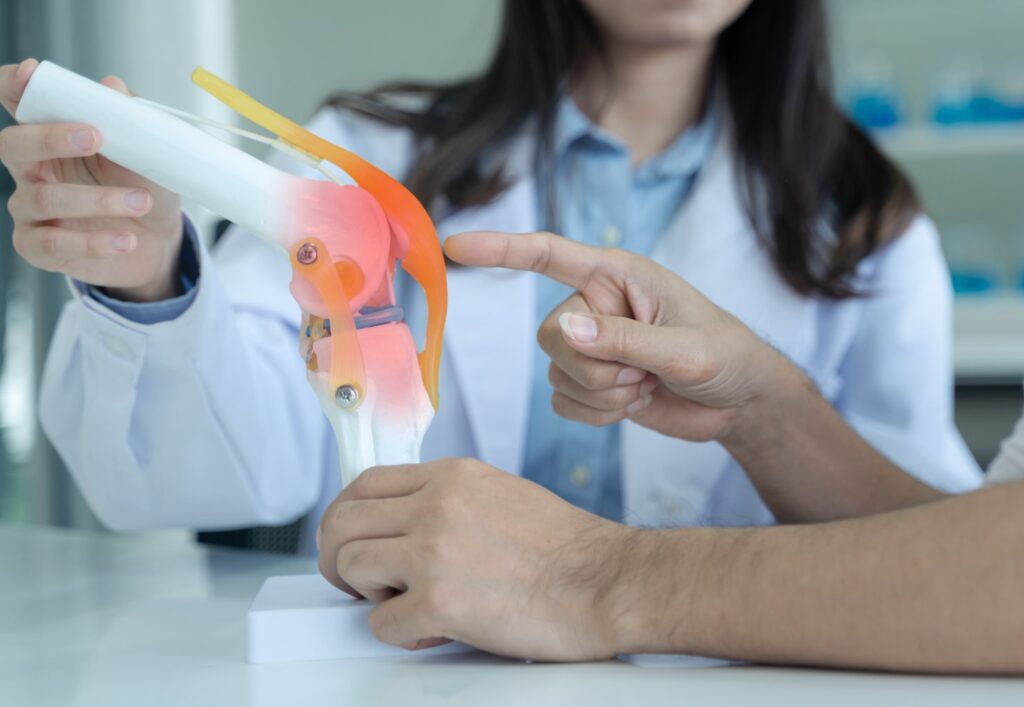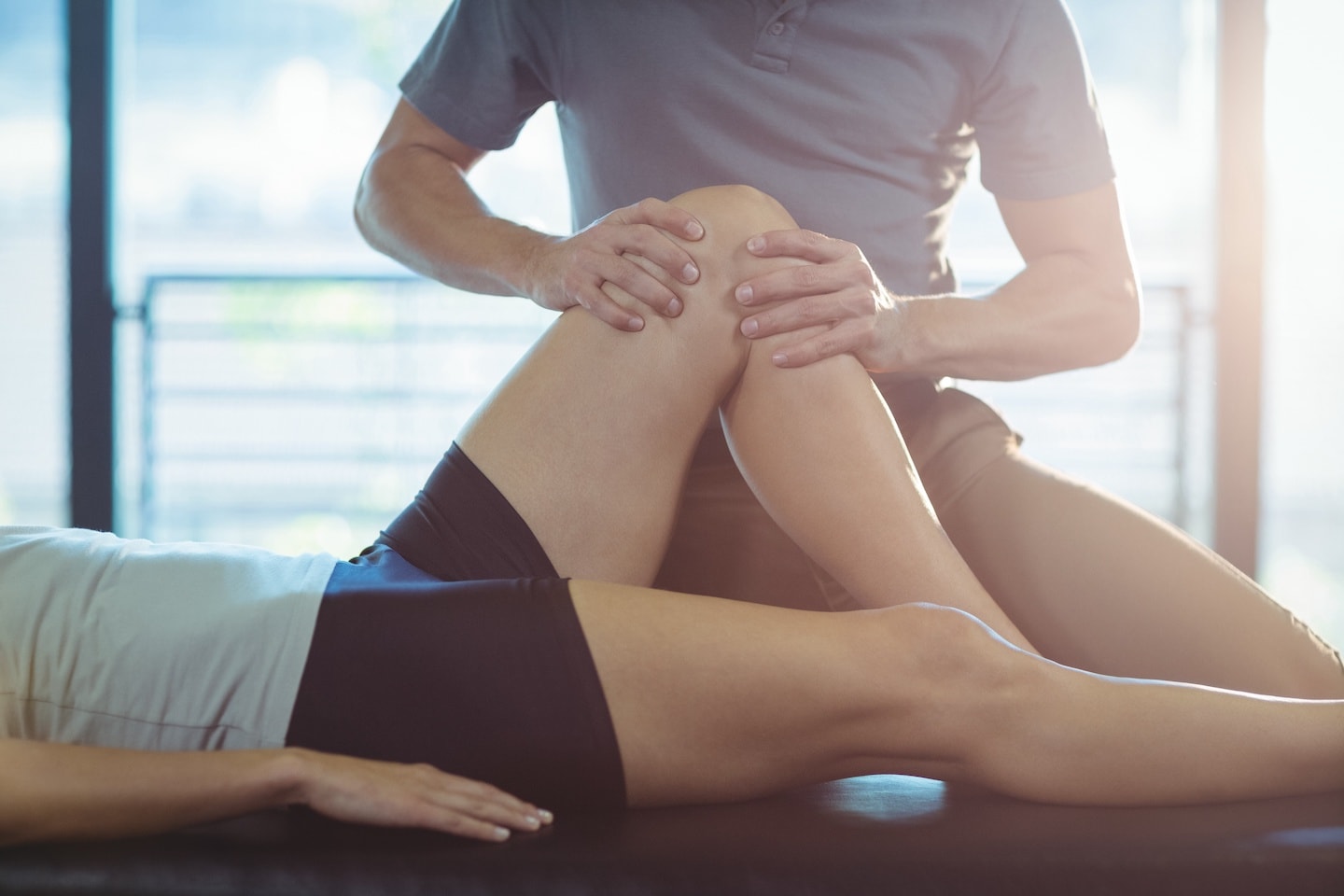If you’re considering knee arthroplasty, you’re probably concerned about the potential complications that could arise after surgery. Complications, while not common, can derail recovery and affect outcomes. Plancher Orthopaedics will provide you with crucial tips on how to avoid common complications in knee arthroplasty, such as infection, blood clots, and implant issues. Plancher Orthopaedics’ focus is empowering you with the knowledge needed to navigate the path to a successful knee replacement. Learn the importance of preoperative strategies, the relevance of cutting-edge surgical techniques, and essential postoperative care to keep complications at bay.
Key Takeaways
- Proactive preoperative measures such as weight management, smoking cessation, managing chronic health issues, and thorough preoperative evaluations are crucial for reducing the risk of complications in knee replacement surgery.
- Knee arthroplasty is effective for relieving debilitating knee pain and restoring function, but patients must understand potential risks such as infection, blood clots, and implant issues, and adhere to postoperative care instructions for successful recovery.
- Infection control is paramount in knee arthroplasty with tactics including chlorhexidine-based skin antisepsis, the use of advanced materials like triclosan-coated sutures, and maintaining ultraclean operating environments to minimize risks.

Preoperative Strategies for a Successful Knee Replacement
Embarking on the path to a new knee starts well before entering the operating room. Here are some key steps to take:
- Shed excess pounds: Weight plays a crucial role; shedding excess pounds reduces the risk of infections and other complications.
- Quit smoking: Smoking cessation is another key aspect, as it significantly decreases healing complications post-surgery.
- Manage chronic health issues: Managing chronic health issues, such as diabetes or heart disease, ensures a smoother surgical experience.
- Undergo a thorough preoperative evaluation: A thorough preoperative evaluation is also indispensable for flagging any risk factors that may affect the outcome of your total knee replacement.
Medications and supplements can interfere with the surgical procedure, so it’s essential to disclose all intake to your surgeon and follow their guidance on which to pause. A clean slate, so to speak, minimizes the risk of adverse reactions during surgery. Additionally, fasting from midnight the day before surgery is a standard protocol to prevent complications related to general or regional anesthesia.
These strategic moves set the stage for optimal surgery success. Coupled with the expertise of orthopedic surgeons, patients can look forward to a seamless transition from their worn-out knee to a robust, artificial knee joint, ready to support their active lives.
Understanding Knee Arthroplasty: Procedure and Care
Knee arthroplasty, or total knee replacement surgery, is a beacon of hope for those suffering from debilitating knee pain. The surgical procedure involves:
- Replacing the damaged surfaces of the knee joint with artificial components
- Relieving pain and restoring function
- Alleviating pain that other treatments can’t and helping patients regain mobility
- Committing to a new lease on life, where each step is no longer a reminder of persistent pain.
While the prospect of a total knee arthroplasty brings much anticipation for relief, it’s crucial to understand the potential risks. Complications, though rare, can include:
- Infection
- Blood clots
- Implant loosening
- Stiffness
- Nerve damage
- Ongoing pain
Patients must be aware of these to actively participate in their recovery and monitor for any signs of trouble post-surgery.
The care doesn’t end when the surgery is over. Postoperative vigilance is fundamental to ensuring the longevity of the new knee. Following the surgeon’s care instructions, taking prescribed medications, and attending follow-up appointments are all part of the journey towards a robust recovery and a return to the activities you love.
Infection Prevention Tactics
The specter of infection looms as a significant concern in any surgery, but especially in knee replacements. To combat this, meticulous infection prevention tactics are employed. Chlorhexidine-based skin antisepsis is preferred over povidone-iodine solutions due to its superiority in reducing surgical site infections. Furthermore, povidone-iodine lavage before wound closure has shown notable efficacy in decreasing infection rates.
Advanced materials like triclosan-coated sutures play a part in reducing the incidence of infections compared to regular sutures. Preoperative decolonization of the skin for Methicillin-sensitive Staphylococcus aureus (MSSA) significantly reduces postoperative infections, protecting against potential complications. Ultraclean laminar airflow systems in operating rooms further minimize airborne contaminants, offering an additional layer of defense against infections.
It is crucial to remember that between 2% and 3% of knee replacement patients could experience infection. This risk underscores the importance of careful monitoring and prevention measures. Recognizing the signs – redness, swelling, warmth, or discharge around the surgical site – is critical for prompt intervention. Adherence to a pre-surgery hygiene regimen, including thorough showers with antibacterial soap, is a simple yet effective measure for patients to mitigate the risk of infections.
Early Mobilization and Circulation Exercises
After knee surgery, the recovery process involves several important steps to ensure optimal healing and functional health. These steps include:
- Learning basic mobility tasks and blood flow exercises during in-hospital physical therapy to prevent blood clots.
- Continuing with breathing exercises to promote lung health and prevent complications.
- Gradually increase your activity level, as guided by your healthcare provider, to regain strength and mobility.
By following these steps and staying active during your recovery, you can improve your overall well-being and enhance your post-surgery outcomes.
Deep vein thrombosis (DVT) is a potential post-surgery adversary that can be minimized through blood-thinning medications and intermittent pneumatic compression. These measures, together with early mobilization, are vital in maintaining blood flow and preventing the dreaded pulmonary embolism – a life-threatening condition that can occur if a blood clot travels to the lungs.
Early mobilization also encompasses a range of motion exercises and the use of compression stockings to aid in circulation. Climbing stairs and other gentle activities are introduced in the initial stages, setting the foundation for a steady recovery path.
Embracing New Technologies and Techniques
As in any field, innovation in knee arthroplasty is revolutionizing patient outcomes. Robotic-assisted surgery is one such advancement, providing unparalleled precision in implant positioning. This technology, alongside 3D CT-based planning, enables surgeons to tailor the surgical process to each patient’s unique anatomy, thus enhancing the success rates of the procedures.
Navigating the new landscape of knee surgery, some key factors to consider are:
- GPS and computer-assisted technologies, which have improved accuracy and efficiency
- Shorter surgical times and the potential for longer-lasting implants
- Selecting a skilled surgeon and a reputable hospital or surgical center that adopts these cutting-edge techniques
However, the adoption of new technologies must be balanced with a systematic review of their safety and efficacy. While clinical trials have shown these techniques to be generally safe, it’s always prudent for patients to remain informed about the latest advancements and their potential benefits.
Activity Guidelines Post-Knee Arthroplasty
Post knee replacement, not all sports are created equal. High-intensity or impact activities can shorten the lifespan of the implant and should be avoided. Running, jumping, and contact sports fall into the ‘no-go’ zone due to the risk of implant wear or loosening. Instead, embracing low-impact activities like:
- walking
- swimming
- golfing
- bicycling
- doubles tennis
is the way to go, offering fitness benefits without the undue stress on your new knee.
Swimming, in particular, is a sterling choice once the wound has healed, offering resistance without excessive stress on the knee joint. Engaging in these recommended low-impact fitness activities is not only good for the body but also for the spirit, allowing patients to enjoy an active lifestyle while protecting their knee replacement.
Remember, the key is moderation and mindfulness. By adhering to these activity guidelines, you’re not only safeguarding your knee replacement but also contributing to its longevity, ensuring that your new knee remains a steadfast companion through your life’s adventures.
Follow-Up Care and Implant Monitoring
The journey to full recovery doesn’t end when you leave the hospital; regular follow-up care and implant monitoring are the compasses that guide you toward long-term knee health. The initial postoperative check-up typically happens around 10-14 days after surgery, with subsequent x-ray examinations at 6-8 weeks. These check-ups continue at routine intervals – one year, five years, and ten years – to catch any early signs of wear or loosening.
For younger patients, who may be more active, the likelihood of needing further surgery increases, making diligent monitoring even more critical. Regular visits with an orthopedic surgeon allow for specialized monitoring and ensure that any signs of loosening are addressed promptly, preventing the need for more invasive revision surgery.
It’s essential to keep an eye on the incision site for signs of infection and to ensure that bone cement if used, remains intact. Any unusual symptoms or changes in the knee should be reported to the surgeon immediately to address potential complications early.
Physical Therapy’s Role in Recovery
Physical therapy is your ally in the recovery from knee arthroplasty, with the mission to improve the range of motion, strengthen the knee, and prevent stiffness. Starting therapy immediately after surgery helps to prevent scar tissue formation, reduce pain, and enhance balance. It typically begins in the hospital and extends to an outpatient program for about four to eight weeks, during which the focus is on regaining strength and mobility in the knee.
Following hospital discharge, the recovery baton is passed to outpatient physical therapy, supplemented by home exercises. This continuation is crucial for maintaining the momentum gained in the hospital and for the healing tissues to repair and strengthen. Patients are encouraged to participate in weight-bearing activities soon after surgery, as these have been shown to improve knee flexion and reduce postoperative pain.
The exercises prescribed by the physical therapist should be diligently followed for at least two months post-surgery. Post-therapy, a home exercise program is provided to maintain the improvements made and to encourage further recovery.
Reporting and Managing Unusual Symptoms
Post-knee replacement surgery, the body can sometimes signal that not everything is as it should be. Severe or persistent pain should not be ignored, as it may be a harbinger of complications or infections. Should you encounter such discomfort, consulting your healthcare provider promptly can prevent further issues.
A comprehensive pain management plan is essential for effectively managing postoperative pain and achieving pain relief. This plan may include:
- Prescription medications
- NSAIDs
- Acetaminophen
- Ice therapy
- Other non-pharmacological methods
Persistent pain that does not abate with these measures requires a thorough evaluation to pinpoint the underlying issue and tailor the management accordingly.
The ability to report and manage unusual symptoms is crucial for a healthy recovery. By being attentive and proactive, patients can ensure that any medical complications are dealt with swiftly, reducing the risk of chronic pain or life-threatening conditions and helping to relieve pain.
Lifestyle Adjustments for Joint Longevity
The longevity of a knee replacement is influenced by several factors, including a patient’s weight, physical activity level, and general health. A healthy diet and regular exercise are pillars of joint health. Maintaining a healthy weight is particularly important, as excess weight can place undue stress on the knee joint.
Engaging in low-impact exercises can support the health and longevity of the knee joint. Some examples of low-impact exercises include:
- Cycling
- Walking
- Swimming
- Yoga
These activities help maintain muscle strength and flexibility without putting excessive stress on the new knee.
Overall, adopting a lifestyle that supports joint health is essential for maximizing the lifespan of a knee replacement. By maintaining a healthy weight and engaging in regular, low-impact exercise, patients can enjoy the benefits of their knee replacement for many years to come.
Summary
Knee arthroplasty is a life-changing procedure that can offer a newfound freedom from pain and improved mobility. From preoperative strategies to embracing new surgical technologies, early mobilization, and adopting a healthy lifestyle, the steps outlined in this guide provide a roadmap to successful recovery and joint longevity. It is a journey that requires commitment, but with the right care and precautions, your new knee can be the steadfast support you need to reclaim the activities you love. Contact Plancher Orthopaedics to see how we can help you with knee arthroplasty
Frequently Asked Questions
How long does a knee replacement typically last?
A knee replacement typically lasts many years, with longevity depending on factors such as age, activity level, weight, and the type of implant. It’s important to follow recommended activity guidelines and maintain a healthy weight for proper care.
What are some signs of infection to look out for after knee replacement surgery?
After knee replacement surgery, be vigilant for signs of infection such as redness, swelling, warmth, discharge, increased pain, and fever. These symptoms can indicate a possible infection and should be promptly addressed with your healthcare provider.
Can I return to sports after a knee replacement?
Yes, you can return to sports after a knee replacement, but it’s best to stick to low-impact activities like walking, swimming, cycling and doubles tennis to reduce the risk of implant wear or loosening.
What role does physical therapy play in recovery from knee arthroplasty?
Physical therapy is crucial for recovery from knee arthroplasty, as it prevents scar tissue formation, improves muscle function, enhances balance, reduces pain, and strengthens the knee. Starting physical therapy immediately after surgery and continuing it as an outpatient program is recommended.
How soon can I start moving after knee replacement surgery?
You can start moving and walking with assistance immediately after knee replacement surgery, as early mobilization is encouraged to improve blood flow and reduce the risk of clots.





 William D. Murrell, MD
William D. Murrell, MD Thomas B. Evely, DO
Thomas B. Evely, DO Clifford Voigt, MD
Clifford Voigt, MD Karthikeyan Chinnakkannu, MD
Karthikeyan Chinnakkannu, MD Max N. Seiter, MD
Max N. Seiter, MD Demetris Delos, MD
Demetris Delos, MD Lauren M. Fabian, MD
Lauren M. Fabian, MD